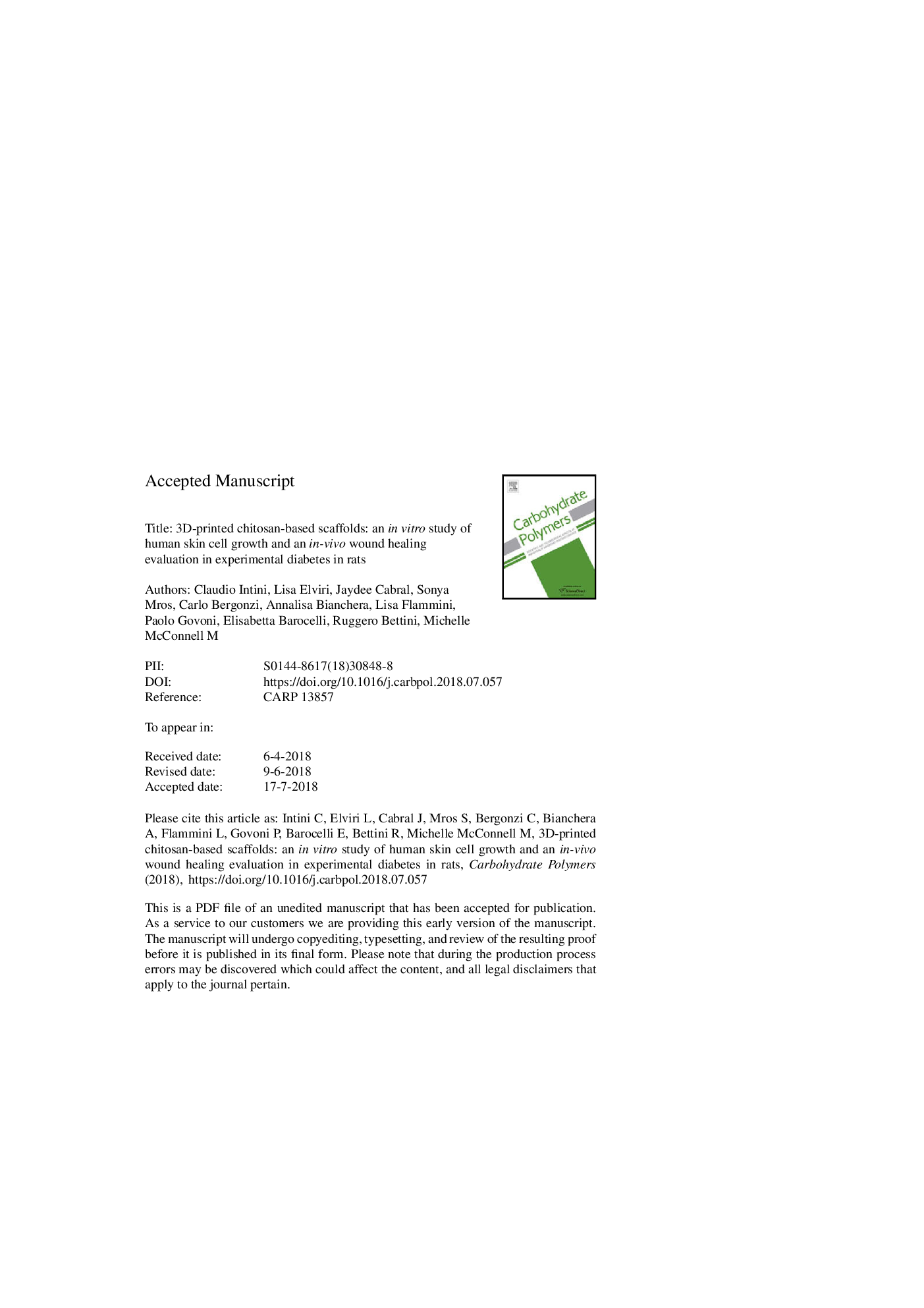| Article ID | Journal | Published Year | Pages | File Type |
|---|---|---|---|---|
| 7781058 | Carbohydrate Polymers | 2018 | 32 Pages |
Abstract
The fabrication of porous 3D printed chitosan (CH) scaffolds for skin tissue regeneration and their behavior in terms of biocompatibility, cytocompatibility and toxicity toward human fibroblasts (Nhdf) and keratinocytes (HaCaT), are presented and discussed. 3D cell cultures achieved after 20 and 35 days of incubation showed significant in vitro qualitative and quantitative cell growth as measured by neutral red staining and MTT assays and confirmed by scanning electron microphotographs. The best cell growth was obtained after 35 days on 3D scaffolds when the Nhdf and HaCaT cells, seeded together, filled the pores in the scaffolds. An early skin-like layer consisting of a mass of fibroblast and keratinocyte cells growing together was observed. The tests of 3D printed scaffolds in wound healing carried out on streptozotocin-induced diabetic rats demonstrate that 3D printed scaffolds improve the quality of the restored tissue with respect to both commercial patch and spontaneous healing.
Related Topics
Physical Sciences and Engineering
Chemistry
Organic Chemistry
Authors
Claudio Intini, Lisa Elviri, Jaydee Cabral, Sonya Mros, Carlo Bergonzi, Annalisa Bianchera, Lisa Flammini, Paolo Govoni, Elisabetta Barocelli, Ruggero Bettini, Michelle McConnell,
